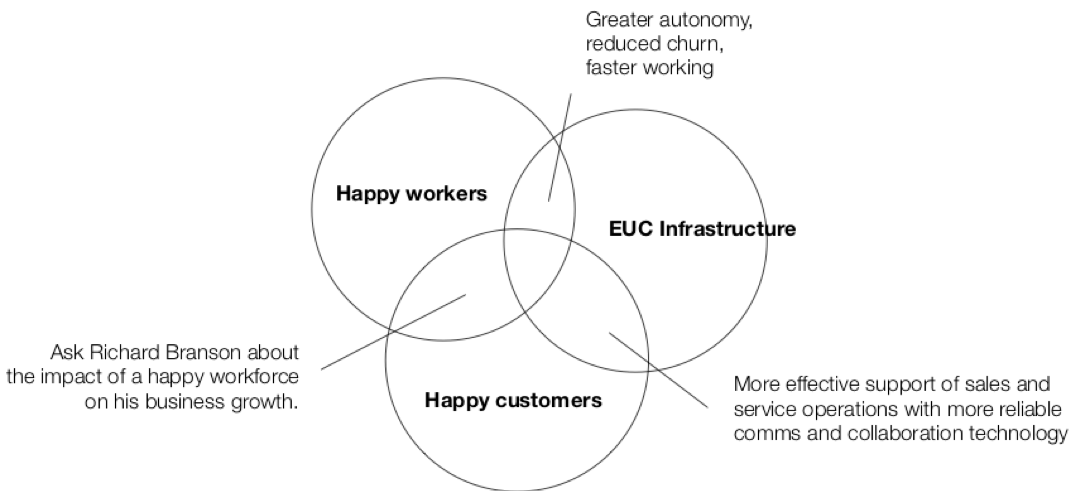Background
I was asked to join the leadership team of a mid-sized design agency with an origin in industrial product design and a strong European footprint. The agency was mature and had a very solid Ops function.
The company had recently been bought by a global tech consultancy. Leading teams in this type of environment is always a challenge due to the inherent cultural differences between a creative and nimble agency and the structured go-to-markets and systematic business development methods of a global tech consultancy.
The number one issue is churn
The central challenge is to find ways to grow together, without the giant parent company killing off the culture of the creative hot-shop it had purchased. The number one issue is churn. If everyone leaves, then the deal made no sense and everyone loses.
If the parent changes and soaks up some of the magic then it’s a win/win:-)
-
Problems to solve first:
- Getting sponsorship at Group leadership level to challenge current policies
- Creative studio being asked to accept parent's performance targets
- Talent walking out the door
-
Once we have exec buy-in:
- Setting up qualification of parent's 'firehose' of leads
- Tag-team with each business development exec
- Leading by example. Bringing the studio's repeatable processes to the parent's delivery pipeline
- Finding better ways to fit the studio team into tech-led projects
- Measuring impact to gain budget for growth
-
Landing new offers and ongoing growth:
- Design-led go-to-market added to enterprise technology deal-shaping
- Design Directors and Leads happy to collaborate with and support tech busdev folk
- Continuing mentorship and growth

Bringing design to enterprise tech: Creating human-shaped services requires high-level enquiry into values as well as tactical research into blockers and pain points. Insights discovered need to be qualified in terms of the end-user's context of use. If we get context, alignment and value right we guarantee user adoption.
Actions
1. Promote emotional safety and mastery of craft
- Recognising the potential friction from the merger, our leadership team emphasised the importance of emotional safety, ensuring that every member felt valued, heard, and supported.
- Regular feedback loops and open forums were set up. Team members were encouraged to voice concerns, share ideas, and brainstorm solutions. Dedicated time for upskilling and personal development was implemented, promoting mastery of their craft.
2. Design advocacy with global clients
- To position the design team as a vital part of the consultancy’s value proposition, there was a push to advocate the importance of design thinking to the global client base.
- Workshops, presentations, and design sprints were organised for key clients. The focus was to showcase how design could drive innovation, solve complex challenges, and bring tangible business results.
3. Set up business development pipeline
- To ensure sustainability and growth, a robust business development pipeline was crucial.
- Collaborating with the consultancy’s sales and marketing teams, tailored design service packages were created. Regular touchpoints and feedback loops with potential leads were maintained, ensuring that the pipeline remained healthy and relevant.

Bringing design to enterprise tech: My team and I adapted EUC (end-user compute) and CIS (cloud infrastructure services) go-to-markets to include a more user-centred approach.
Impact
Winning business in new sectors
By leading creative pitches, the design team became not just a support function but a key business driver. Our fresh perspective and innovative approach attracted luxury brands in the lucrative Chinese markets, leading to enterprise technology engagement.
Service designers upped their game in solution-shaping
With the mastery of craft promoted within the team, service designers elevated their output. They became adept at crafting solutions that resonated with clients used to an approach more focused on technology licensing
Much less painful recruitment
It was touch and go for a few months, but the team’s reputation stayed as strong as it was before the merger and recruitment gradually became easier. The blend of a strong and clearly-stated organisational purpose, cultural diversity and exciting projects like AI-driven health-tech and alternative energy pilots became a strong draw for top talent.

Bringing design to enterprise tech: We also worked on the Modern Workplace go-to-market which overlapped the EUC and Collaboration service lines. We showed how a user centred approach could result in a win/win.
Conclusion
By promoting emotional safety, mastery of craft, and strong business development strategies, our design agency integrated into the parent global tech consultancy without losing our mojo. Our influence grew, and went beyond the immediate London studio team, reshaping the consultancy’s approach to business and laying the foundation for sustained growth and innovation.
Can I help you solve a similar problem? dug@goodlookslikethis.com
